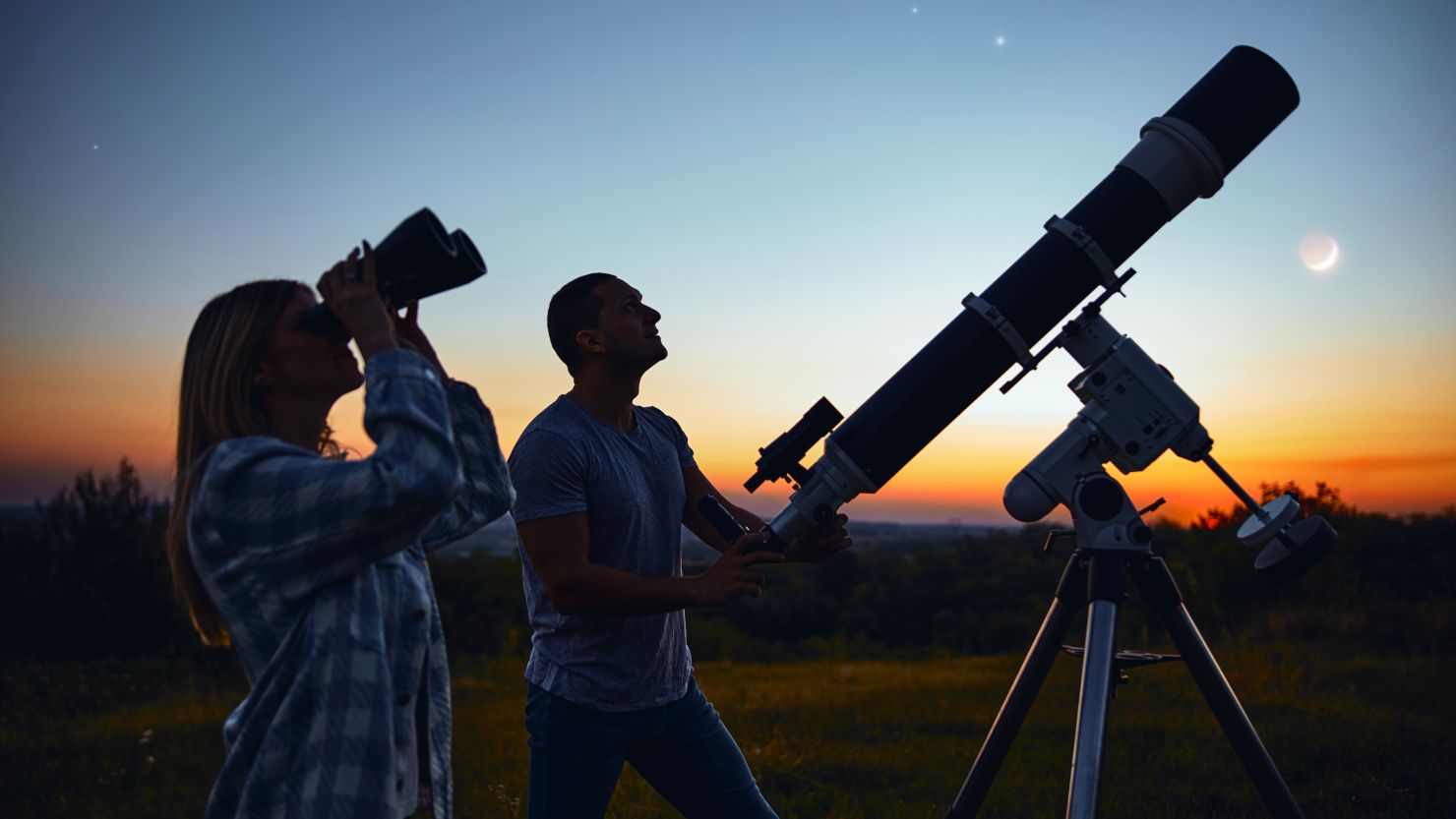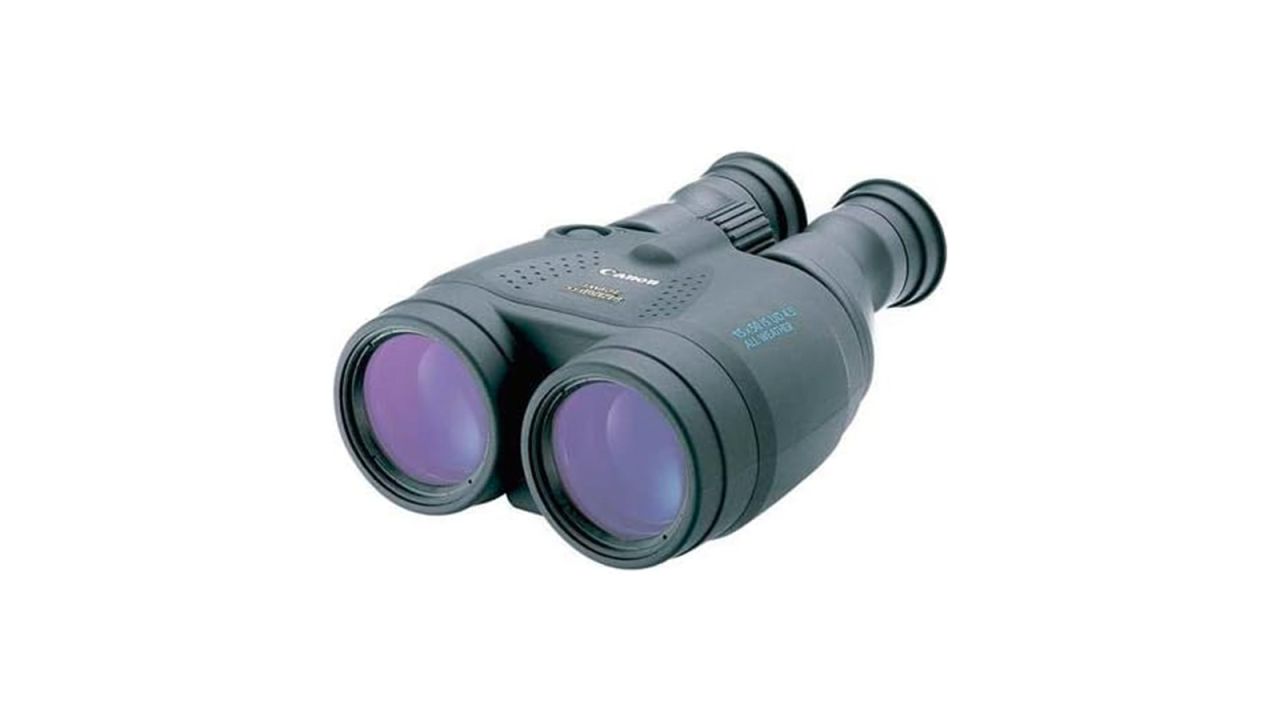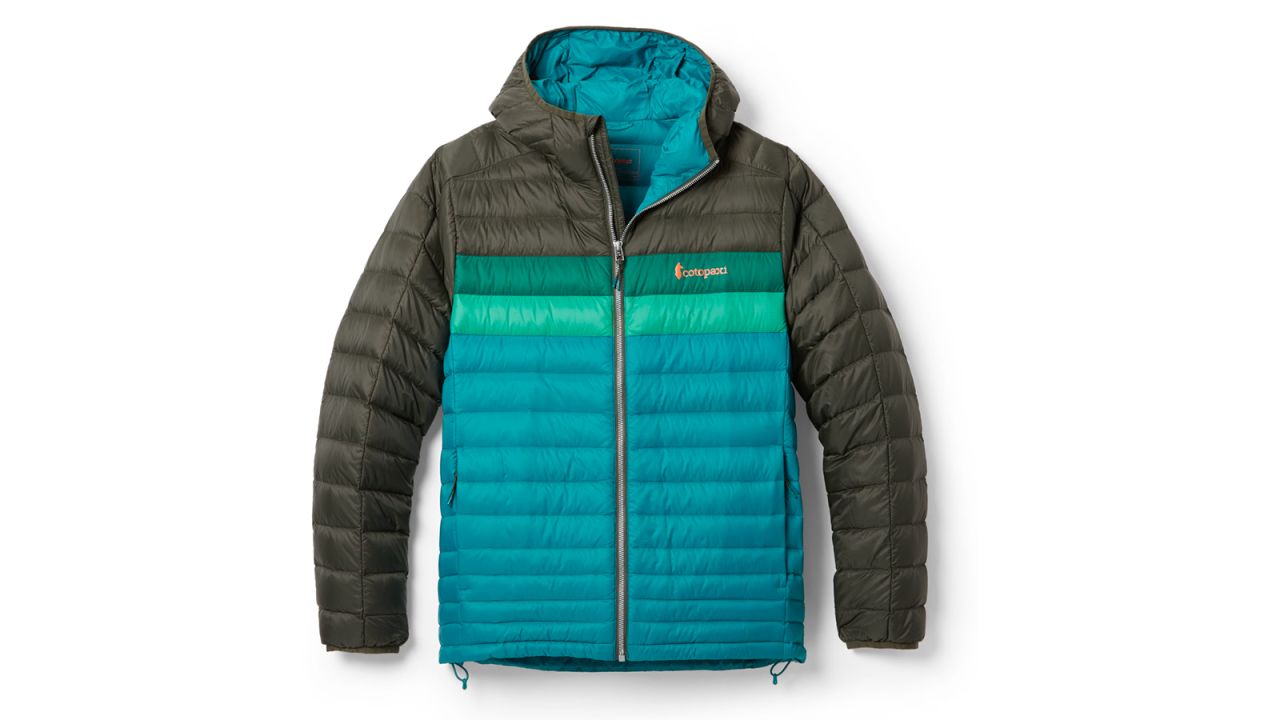Stargazing is the ideal all-season activity that can help renew your appreciation for the endlessly vast galaxy while getting you out into the great outdoors. But if you’re peering out of your foggy living room window or standing in front of the open sky with just a pair of naked eyes, you might not be getting all you can out of your stargazing experience. That’s what makes astronomy binoculars — and other related equipment — a must-have for stargazing as far as the eye can see, whether you’re peering at the Double Cluster in Perseus or Caroline’s Rose in Cassiopeia.
“Binoculars are like two small telescopes, one for each eye,” says Rick Fienberg, senior adviser to the executive officer at the American Astronomical Society and senior contributing editor at Sky & Telescope. “They do the same two things that telescopes do: They collect more starlight than your eyes alone, enabling you to see fainter objects, and they magnify the view, enabling you to see more detail.” Plus, they’re more novice-friendly than telescopes since they display a wider field of view, they enable you to observe with both eyes open and they’re easy to carry on the go, he says.
So, what exactly should you be looking for in a proper pair of binoculars for stargazing? “A good pair of stargazing binoculars will have a large aperture without being too heavy,” says Adam Ripley, sky guide at Sky Watcher Star Tours. He explains that binoculars are typically rated by identifying their magnification power by their aperture size (so a typical pair of stargazing binoculars might be rated 10 by 50, meaning they would magnify 10x and boast a 50mm aperture). He says 8x to 12x magnification is a solid range to aim for that provides enough zoom to see many faint star clusters but will maintain a wide field of view, allowing you to scan a large area of the sky. He recommends aiming for an aperture range of 40mm to 50mm, with anything lower than 40mm compromising the amount of light collected by the binoculars, making everything appear dim. A pair larger than 50mm will often be too heavy to hold comfortably, he says.
If this is your first foray into binoculars, not to worry: Fienberg says they’re fairly straightforward and will do most of the heavy lifting for you. “It’s really important to hold binoculars steady, and with the push of a button, image-stabilized binoculars steady the view no matter how shaky your hands are,” he says.
Here are the best binoculars and stargazing enhancements to make the most of the open sky.
To get a glimpse of the nebulous “man on the moon,” grab Fienberg’s favorite binoculars ideal for gazing at nebulas, star clusters, the sun (with safe solar filters secured over the front lenses) and, of course, the moon.
“We use the handy and waterproof Celestron Outland X 8x42 Binoculars in black,” says Matthias Schmitt, head astronomy guide at Stargazing Zion. “The first number indicates the magnification (8x), and the second number is the aperture (how much light the optics let in). Binoculars will get you started into stargazing and indicate a progression from naked-eye observing. The next step up would be a telescope. You can use binoculars at any time. Just laying there gazing at the wonders of the night sky will last a lifetime.”
According to Aaron Clevenson, observing program director at The Astronomical League, 10x50 binoculars are ideal because they’re “small enough to handle easily; provide an exit pupil of 5mm, which is the typical pupil size for most people at night; and provide enough magnification to see many objects.” This budget-friendly option is ideal for beginners and getting glimpses of fast-moving objects (shooting stars, anyone?).
Fienberg says for most people and occasions, 7x or 8x binoculars with front lenses of 35mm to 56mm in diameter are the best choice “since they’re easier to hold steady than higher-power, heavier binoculars.” Grab this sensible midrange pair for easy stargazing with its tripod adapter socket, focus knob, twist-up eye cup and neck strap attachment.
“Personally. I use a pair of Athlon Midas 10x42 binoculars,” says Ripley. “These are a versatile pair for day or night use and have very high-quality glass.”
“For folks looking for something slightly less expensive, I recommend the Nikon Aculon series, which has a few different options around the $100 range,” says Ripley. “Even cheaper pairs can work, but they may not be as durable in the long run.”
While Fienberg says binoculars tend to not require any accessories — another advantage over telescopes — models with lenses 10x and up, which are hard to hold steady, might require a tripod adapter. “Make sure any binoculars you buy have a 1/4-20 threaded hole, the standard fixture for attaching it to a tripod,” he says.
“Aside from a good pair of binoculars, it's always helpful to have a good headlamp with red light to preserve night vision,” says Ripley. “I like the Black Diamond Cosmo since it has a red light mode as well as spotlight and flood in white. The Cosmo and others by Black Diamond have a dedicated button to toggle through the light modes, meaning you don't have to cycle through a white light mode, which can temporarily ‘bleach out’ your night vision.”
“A red light flashlight is an important aid in helping you find objects and also preserve your night vision,” says Clevenson. This single-mode flashlight is the perfect way to maximize nighttime visibility without disturbing any wildlife in your midst.
Clevenson recommends investing in a planisphere to help you easily navigate the galaxy — no screens required. Simply dial the date and time to find your favorite constellations for a planetarium at your fingertips. This one is made of plastic instead of cardboard, which is preferable in wet conditions.
For binocular observing, Clevenson recommends a parallelogram mount for “greater stability, which allows for better observing.” This model allows you to adjust the height of your binoculars without losing the target from your field of vision.
To maximize (and optimize) your time spent outdoors under the night sky, Schmitt suggests staying prepared with a warm puffy coat. We highly recommend this ultra-insulated down jacket made with 800-fill down that packs down into its own pocket and weighs just 14 ounces. For better nighttime visibility, opt for one of its brighter colorways like Woods/Gulf or Maritime/Sunset.
Schmitt recommends a small sleeping pad for stargazing sessions that last well into the night. “When it gets colder in the fall, the ground conducts heat away from your body. A sleeping pad will isolate you and keep you stargazing for hours,” he says. This expert-approved model is lightweight enough to carry in your pack and surprisingly comfortable too.
To stay upright during your stargazing session, a simple seating pad will suffice. This popular model from Therm-a-Rest features a closed-cell foam padding for added comfort with an aluminized coating for warmth on cold or wet terrain.
Schmitt says you’ll need a pair of gloves to keep you comfortable while using those binoculars in the chill of the night. We love this well-insulated pair that grants you quick access to your phone while stabilizing your use of your delicate devices with grippy silicone palms.
“There are plenty of free stargazing apps for download so you can continue on your stargazing quest,” says Schmitt. “We use SkySafari and SkyView,” both of which are designed to help you identify planets, constellations, satellites, stars and deep-sky objects whether you’re a novice or advanced stargazer. SkySafari also boasts a social element, allowing you to record and share your starlight sightings.
Because this app is free, it’s a lot more bare-bones than its paid counterpart, SkySafari; however, it’ll still use your camera to accurately identify celestial objects from stars to satellites and constellations.































